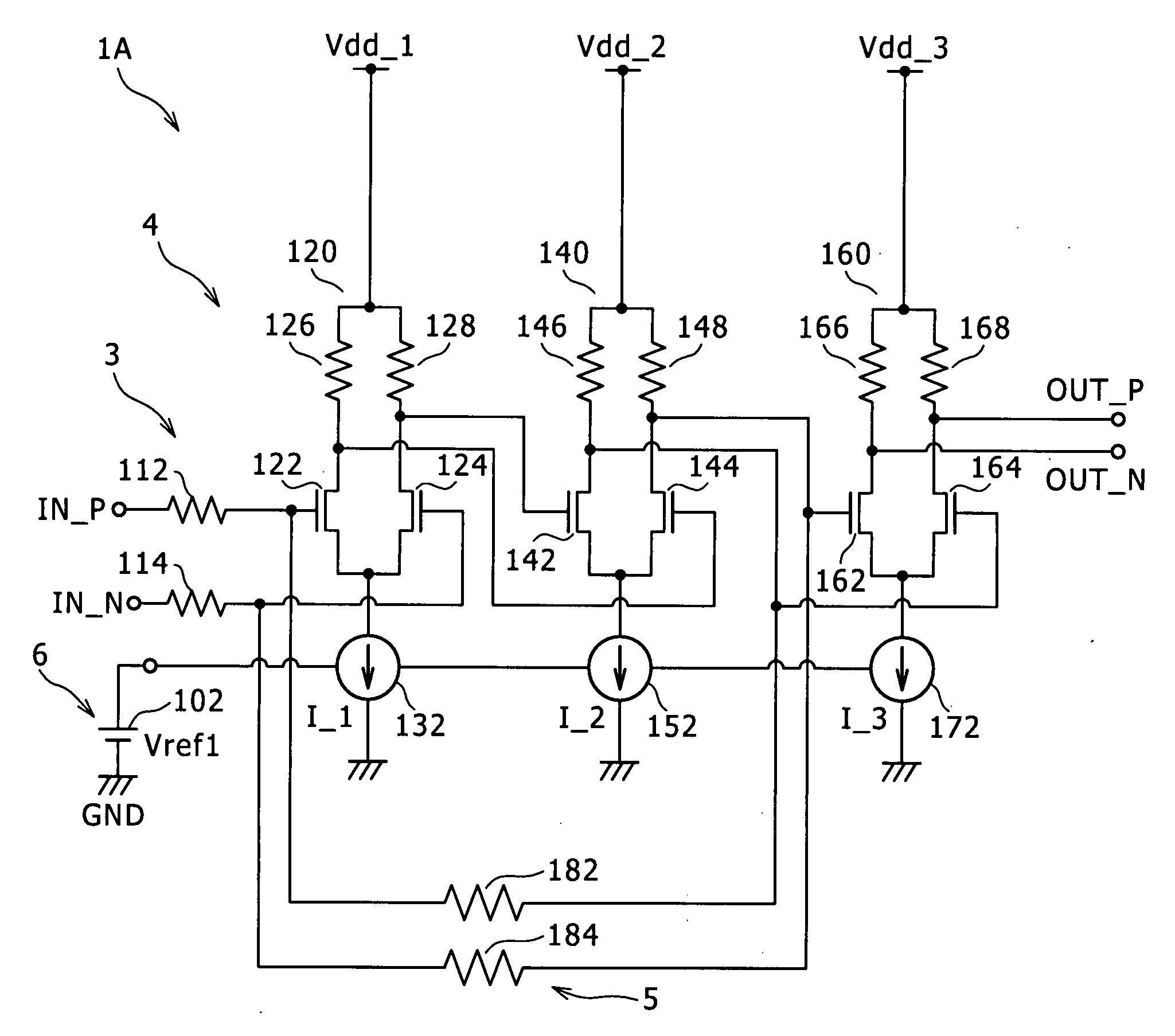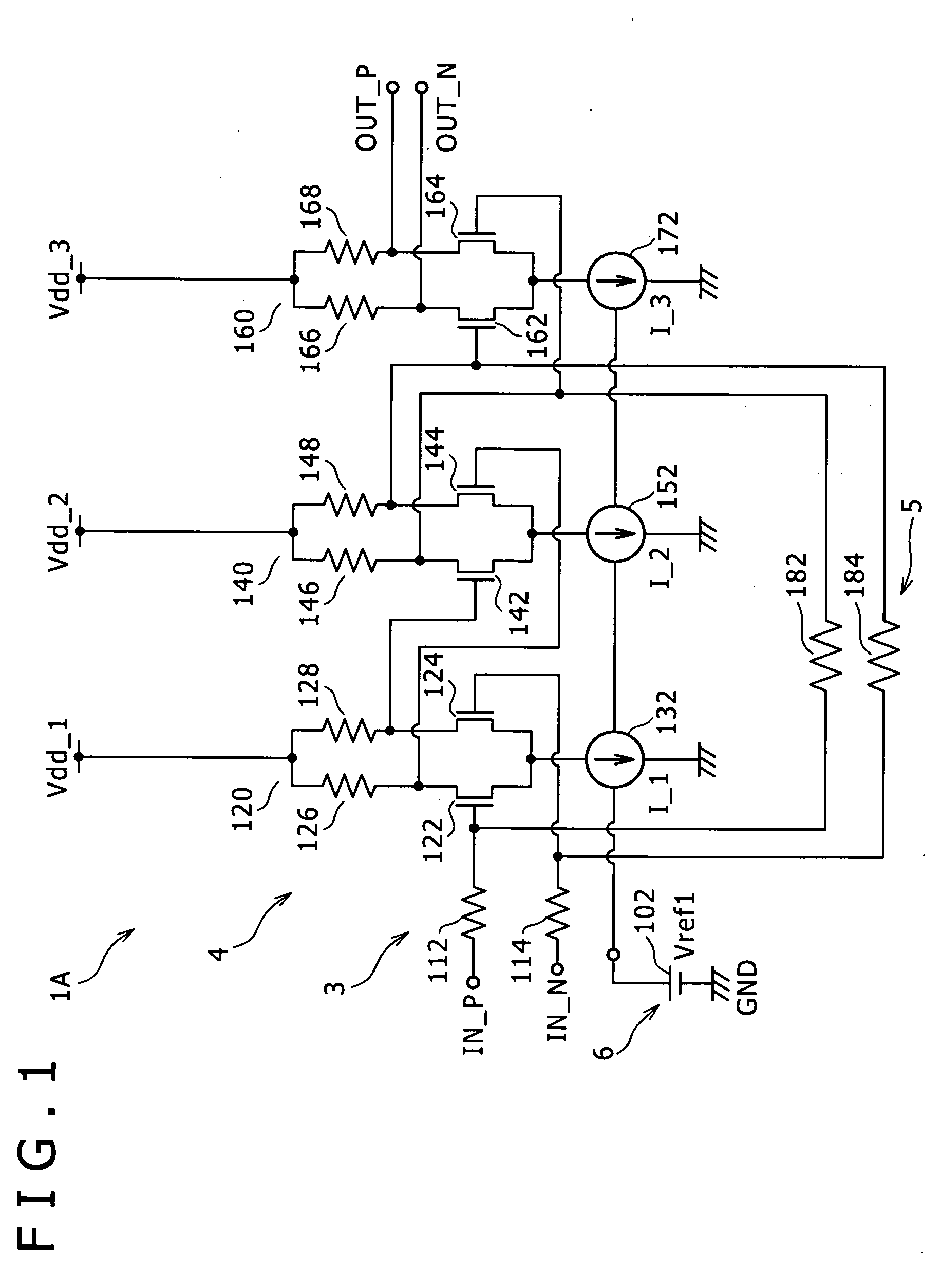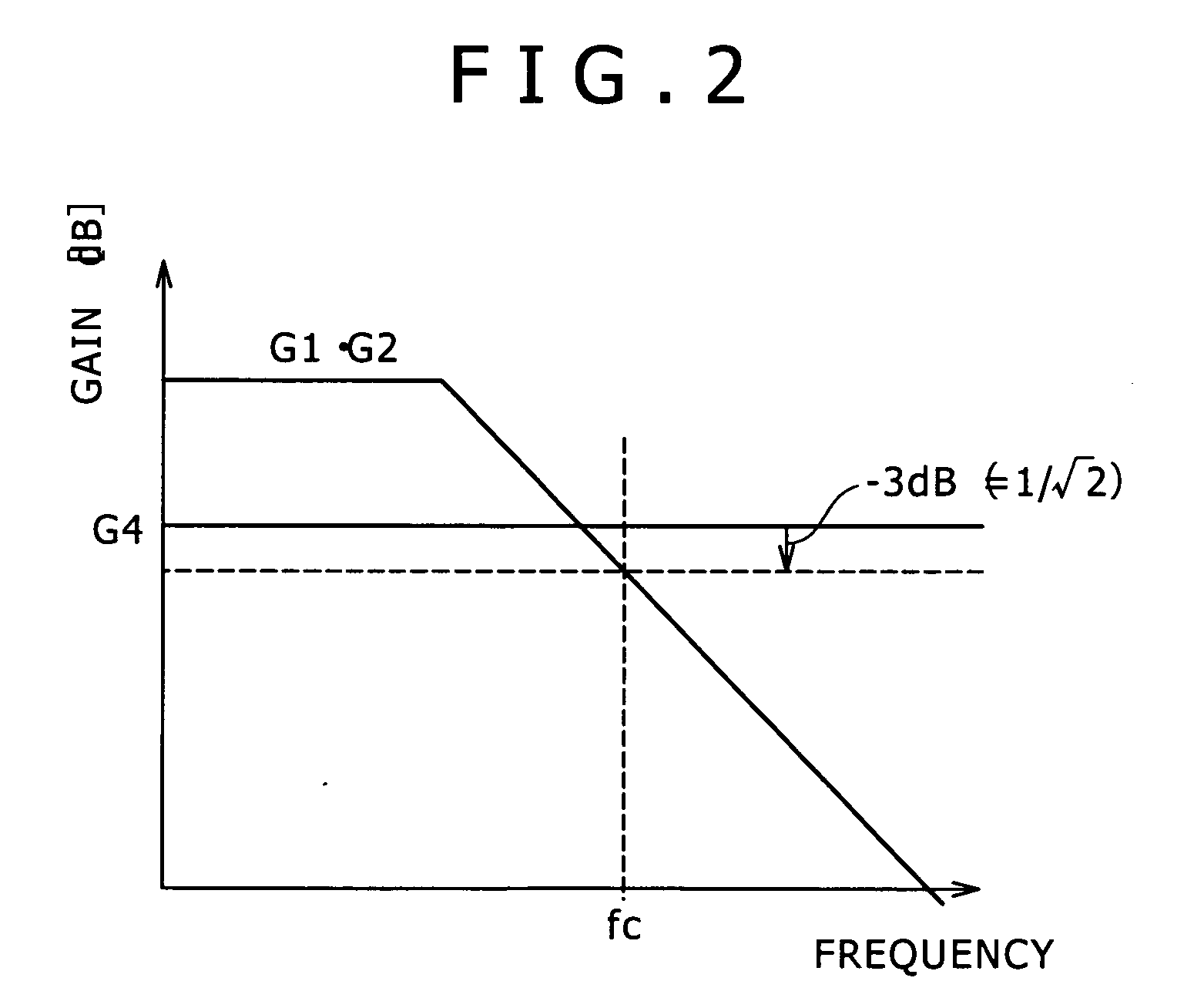Amplifying circuit, semiconductor integrated circuit, wireless transmission system, and communication apparatus
a technology of semiconductor integrated circuits and amplifiers, applied in the direction of rf amplifiers, amplifiers with semiconductor devices/discharge tubes, rf amplifiers, etc., can solve the problems of high-frequency circuits, 1 involves drawbacks, and inferior frequency characteristics
- Summary
- Abstract
- Description
- Claims
- Application Information
AI Technical Summary
Benefits of technology
Problems solved by technology
Method used
Image
Examples
first embodiment
Plurality stage of amplifying cells+Feedback Circuit
[0035]FIGS. 1 and 2 are respectively a circuit diagram and a graphical representation explaining an amplifying circuit according to a first embodiment of the present invention. Here, FIG. 1 is the circuit diagram showing a configuration of the amplifying circuit according to the first embodiment of the present invention, and FIG. 2 is the graphical representation explaining a frequency band of the amplifying circuit according to the first embodiment of the present invention.
[0036]The amplifying circuit 1A of the first embodiment includes an input portion 3, an amplifying cell portion 4, a D.C. feedback path 5, and a reference power source portion 6. In this case, in the amplifying cell portion 4, a plurality stage of amplifying cells AS each having a function of amplifying a signal are cascade-connected to one another. Also, the reference power source portion 6 generates a reference voltage in accordance with which an operating cur...
second embodiment
First Embodiment+D.C. Operating Point Stabilizing Circuit
[0073]FIG. 3 is a circuit diagram showing a configuration of an amplifying circuit according to a second embodiment of the present invention. The feature of the amplifying circuit 1B according to the second embodiment of the present invention is to include an operating point voltage stabilizing circuit 200 (in other words, a D.C. operating point change suppressing circuit) based on the amplifying circuit 1A of the first embodiment. The operating point voltage stabilizing circuit 200 monitors an operating point voltages of the differential output signals from the amplifying cell AS, and carries out control in such a way that the operating point voltages of the amplifying cells AS are each held constant based on the monitoring result. Hereinafter, the amplifying circuit 1B of the second embodiment will be described by focusing on a difference between the first embodiment and the second embodiment.
[0074]In the amplifying circuit ...
third embodiment
First Embodiment+Load Parasitic Capacitance Correcting Circuit
[0090]FIGS. 4A and 4B are respectively a circuit diagram showing a configuration of an amplifying circuit according to a third embodiment of the present invention, and a circuit diagram showing a configuration of a negative capacitance circuit in the amplifying circuit shown in FIG. 4A. The feature of the amplifying circuit 1C of the third embodiment is to include parasitic capacitance correcting circuits for correcting (canceling) load capacitances which occur parasitically on the output sides of the amplifying cells AS based on the amplifying circuit 1A of the first embodiment. Hereinafter, a description will be given by focusing on a difference from the amplifying circuit 1A of the first embodiment.
[0091]As shown in FIG. 4A, the amplifying circuit 1C of the third embodiment includes negative capacitance circuits 300 each functioning as the parasitic capacitance correcting circuit on the output sides of the amplifying c...
PUM
 Login to View More
Login to View More Abstract
Description
Claims
Application Information
 Login to View More
Login to View More - R&D
- Intellectual Property
- Life Sciences
- Materials
- Tech Scout
- Unparalleled Data Quality
- Higher Quality Content
- 60% Fewer Hallucinations
Browse by: Latest US Patents, China's latest patents, Technical Efficacy Thesaurus, Application Domain, Technology Topic, Popular Technical Reports.
© 2025 PatSnap. All rights reserved.Legal|Privacy policy|Modern Slavery Act Transparency Statement|Sitemap|About US| Contact US: help@patsnap.com



